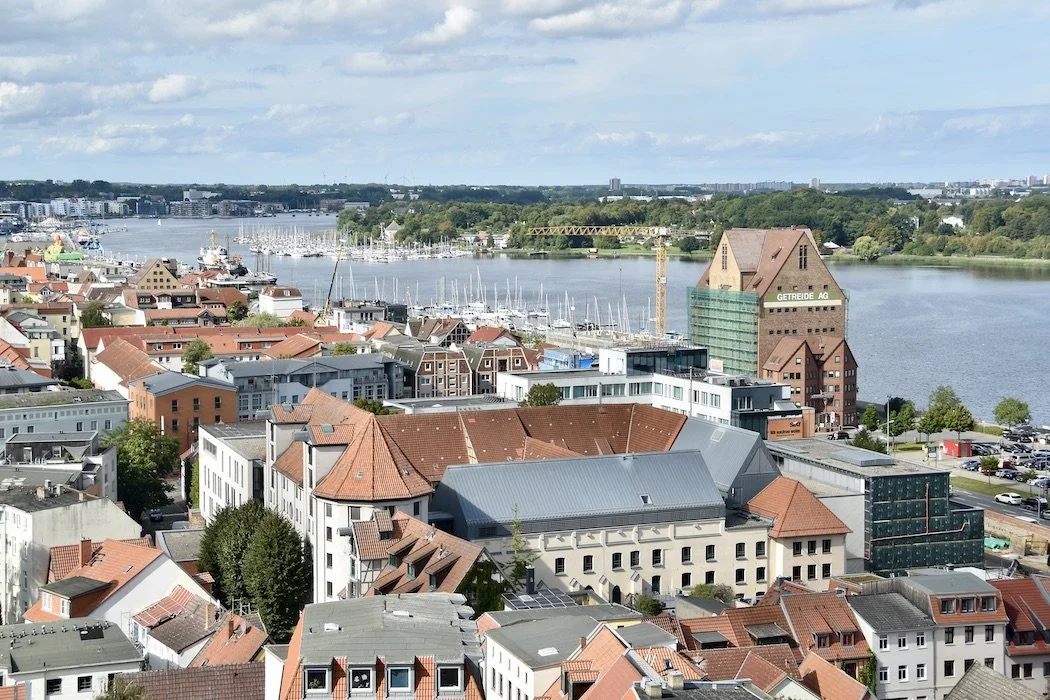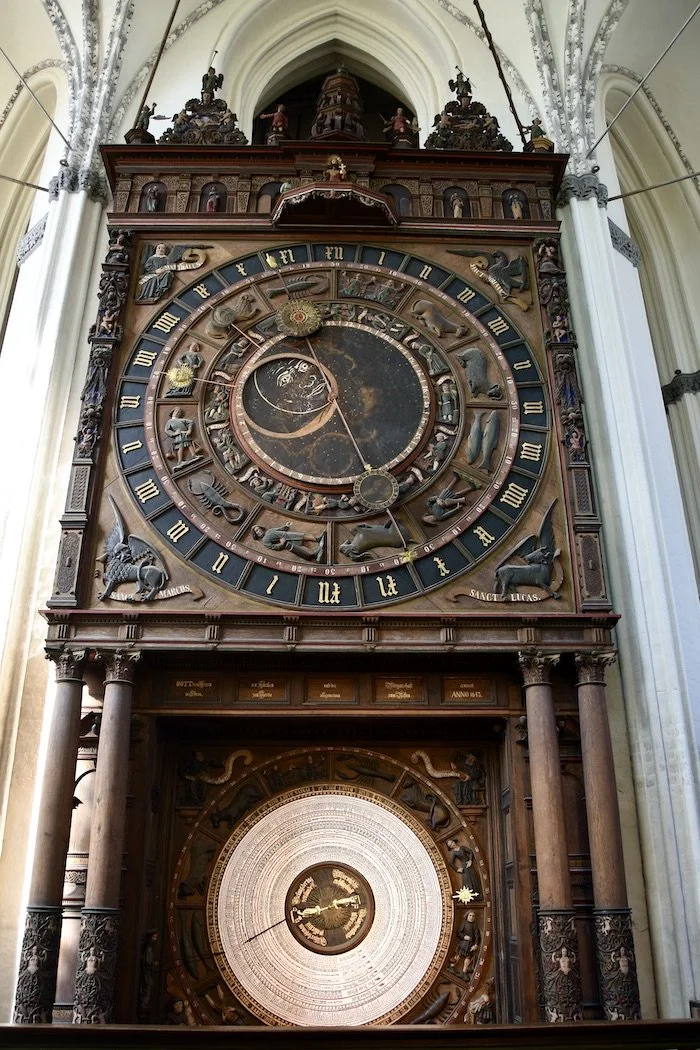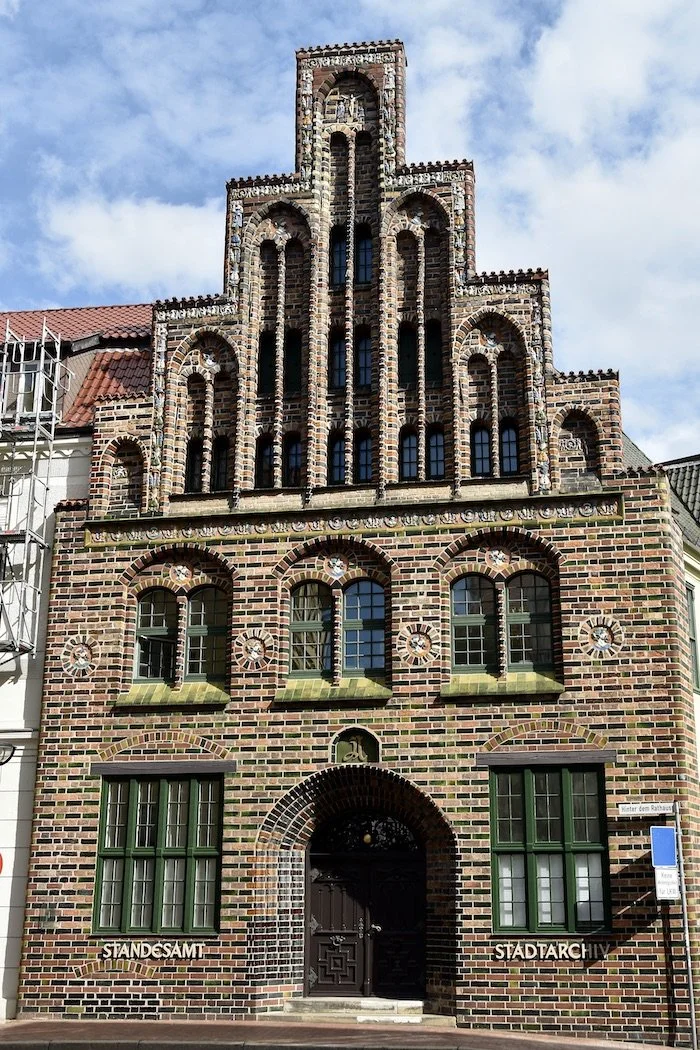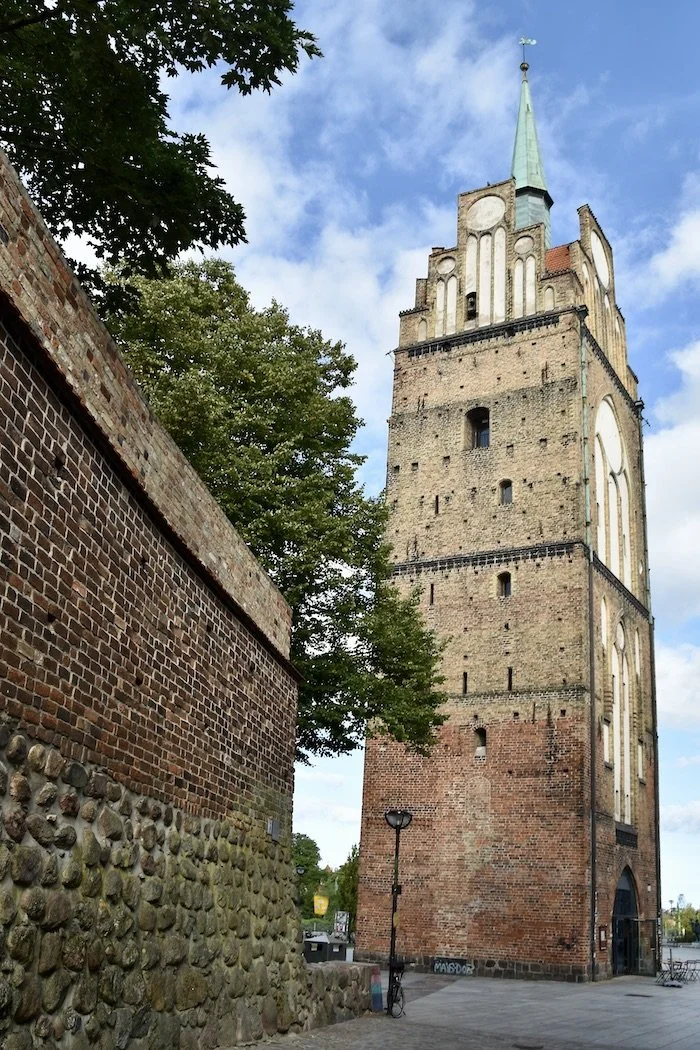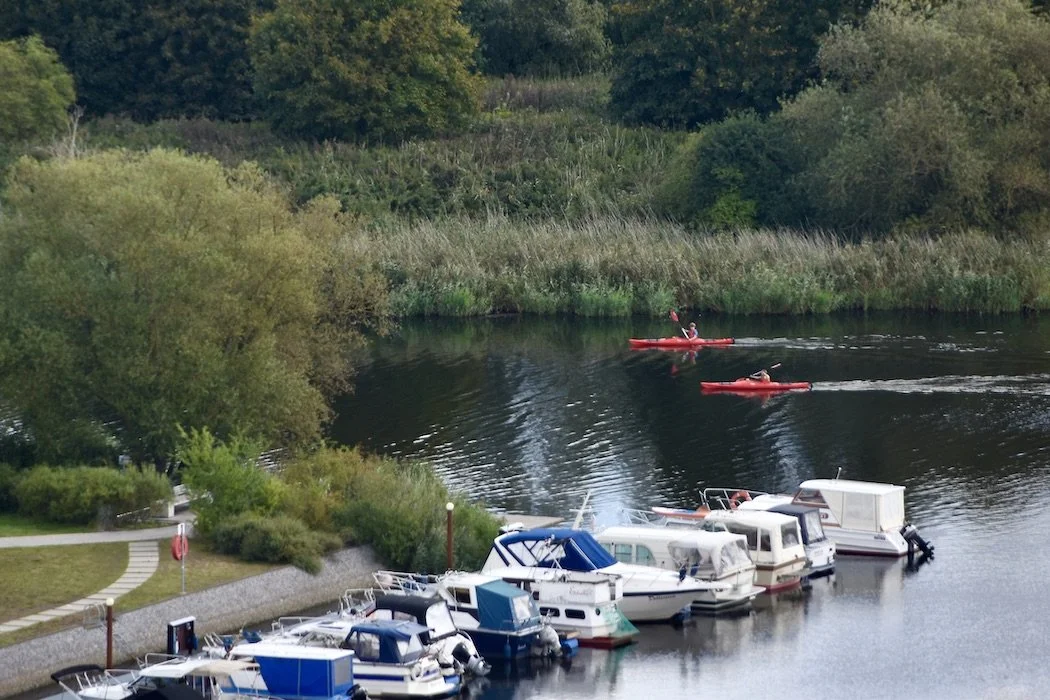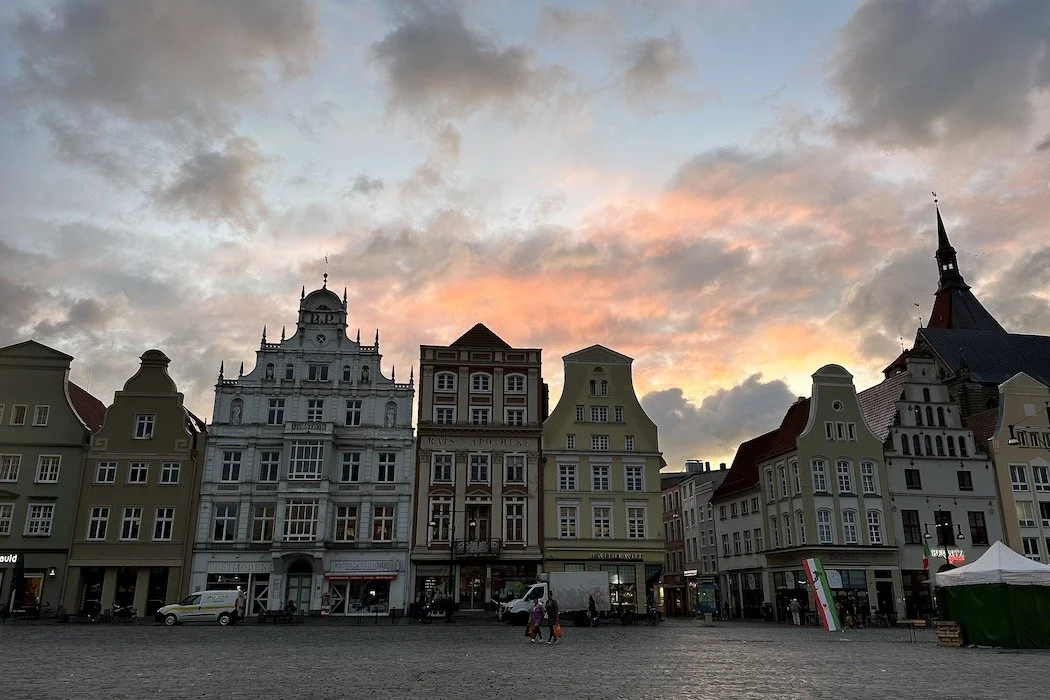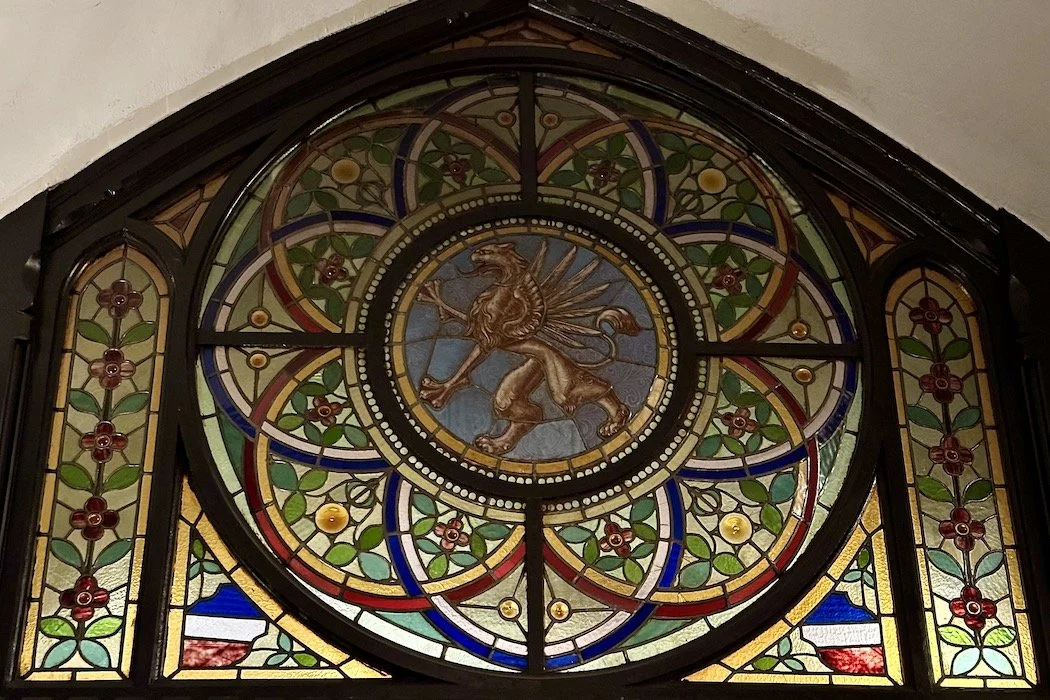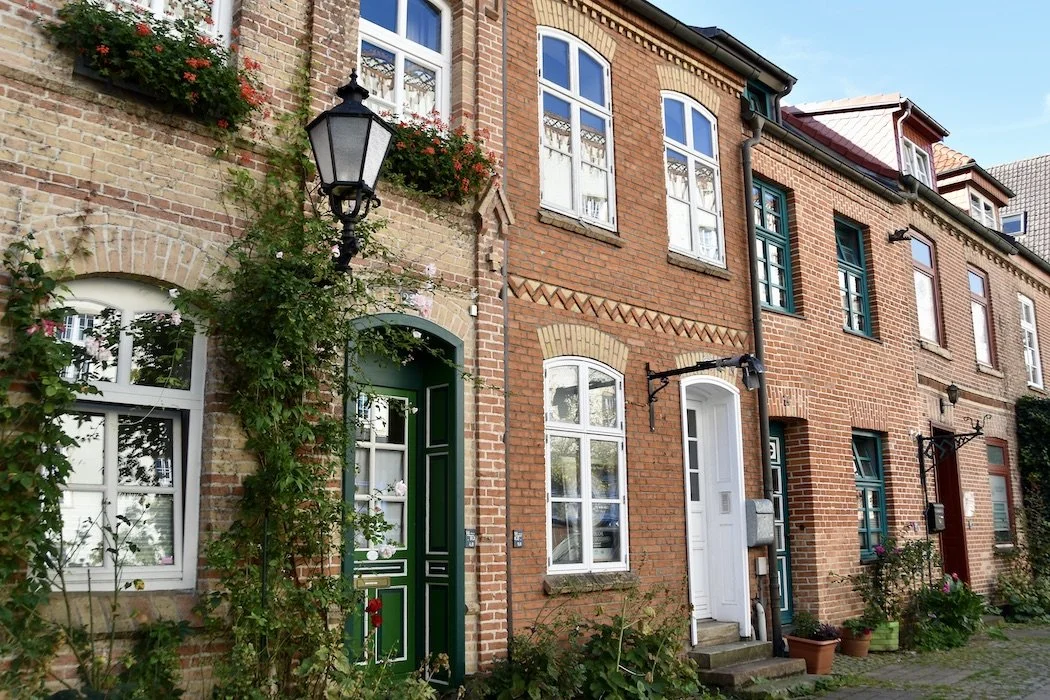Under-appreciated Rostock Revealed
Rostock City Harbor seen from St. Peter's Church steeple
“I like to tell untold stories or lesser-known aspects… Topics outside the mainstream often reveal more…” – Nancy Kates
The historic city of Rostock straddles the south end of Mecklenburg Bay on Germany’s Baltic Sea coast and stretches along the River Warnow for 16 long kilometers (10 mi) until the river meets the sea at Warnemünde. It was Slavs who settled the high ground at the riverside in the 11th century, naming it Roztoc, meaning fork of a river, and thus cementing an interconnection with the water that lasts to this day. After Danish King Valdemar I set the town ablaze, German traders settled, and Rostock was granted city rights by Lübeck Law in 1218. Prosperity came quickly to the burgeoning port town after Rostock joined the powerful Hanseatic League thirty years later.
Originally three separate towns, the Old, Middle, and New united in 1262 under one city council in Mittelstadt, the new city center, all within the seven-meter-high (23 ft) defensive wall. Upper-class long-distance traders built Dutch-style gabled brick houses that still adorn the squares while small-time traders and mastercraftsmen lived in the side streets, and low-income residents made do in alleyway cottages. Trade of cloth, grain, and beer and shipbuilding made Rostock a business metropolis represented by 20 guilds that left their legacy in street names: Weavers, Tanners, Brewers, Beachside. In such a city where wall sections and four of 20 medieval gates remain, many historical spots and hidden corners wait to be revealed.
The Old Town (Altstadt) centers around the Old Market and St. Petri Church (1252), which has a steeple worth ascending (by elevator) to an observation platform. The City Harbor, with its large granaries, new buildings, and pleasure boat docks, is just downhill along the Warnow. Rostock’s oldest church, St. Nikolai, severely damaged twice, now serves as a concert hall and exhibition center. Uphill in Middle Town (Mittelstadt) at the cobblestoned Neuer Markt square, the Brick Gothic City Hall, possibly Germany’s oldest, is fronted by a pink Baroque façade. It faces six medieval gabled houses across the market square, and just behind it stands Rostock’s best-preserved Hanseatic-style brick house, Kerkhofhaus. Nearby, the massive St. Mary’s Church features a stunning, not-to-be-missed 1472 astronomical clock.
The New Town (Neustadt) is concentrated around the old Hops Market, now named for Rostock University, the oldest in the Baltic region, founded in 1419. Next door, the superb local history museum housed in Holy Cross Monastery is worthy of a visit. A whimsical fountain, called “Zest for Life” for its naked figures, dominates the square, and venerable merchants’ houses share space with the Five Gabel House. This post-war prefabricated building successfully fits its surroundings, delighting with chimes that ring at noon, and restaurants serving traditional food updated for today’s palate. The bustling pedestrian shopping street runs through University Square on its way from Neuer Markt to the medieval Kröpelin Gate. A bit hidden away, the Heiligengeisthof (Holy Spirit) courtyard of a former cloister hospital, lined with modest dwellings converted to homes and restaurants, is a charming, shaded rest stop surrounding a fountain.
Along the outside length of the ancient wall, a shady walking path provides an alternative to all the history, and a short tram ride from the town center, Rostock Botanical Garden’s arboretum and gardens impress in any season with blooms ranging from medicinal to alpine.
Don’t Miss:
Climbing the steeple of St. Petri Church for the glorious panorama view over town and to the ocean.
Serendipity:
Locals Along the Way- learning the entire history of the Ratskeller from a friendly, talkative barman.
Lunch Tip:
Rathskeller12 under the City Hall on Neuer Mark Square for good German fare.
Bedtime:
Penta Hotel, a modern hotel in a great location, a few steps from University Square.
Subscribe for inspiration to have my posts drop directly into your inbox. *If you enjoyed what you read, please share this post with like-minded travelers.*
*All photographs are mine, taken with my Nikon D5600 or iPhone 14 Pro.*

